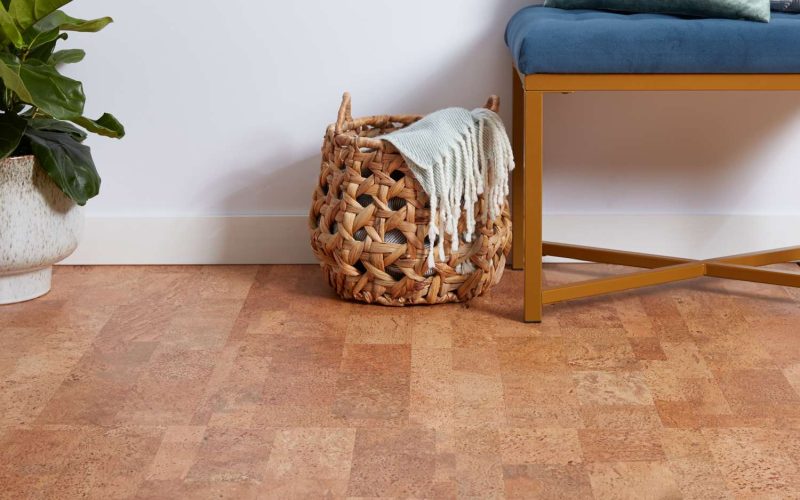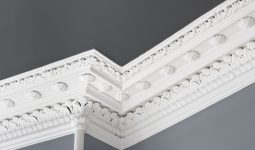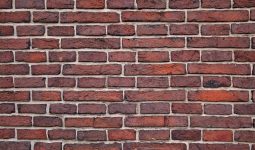Today, there are many eco-friendly flooring options to choose from.
Whether you’re considering replacing the flooring in your home or want to upgrade to something more eco-friendly, consider the following possibilities before deciding.
While some may cost more than traditional options, it may be worthwhile to invest in these materials.
If you plan on staying in your home for years to come, you will save money over time.
Moreso, reducing or eliminating the need to replace carpeting or tile flooring due to wear and tear.
1. Engineered Bamboo
Engineered bamboo is a sustainable material that makes for beautiful and durable flooring. It’s also eco-friendly, as it’s made from a renewable resource.
When choosing bamboo flooring, look for products certified by the Forest Stewardship Council (FSC).
However, this certification ensures that the bamboo was sourced from an FSC-certified forest and that the product was manufactured using environmentally responsible practices.
Therefore, it’s important to research flooring before purchasing it. Be sure to ask about FSC certification before purchasing your engineered bamboo!
2. Cork Flooring
Cork flooring is a great eco-friendly option for your home. It’s made from the bark of the cork oak tree, a renewable resource.
Cork is also biodegradable and recyclable. Plus, it’s durable and easy to clean.
Cork is harvested from the bark of the cork oak tree, which grows in Portugal and Spain.
The trees are slow-growing with long lives; they can live up to 600 years!
They are sustainable because their bark can be stripped every ten years without harming the tree.
When removing the bark, workers will leave some on so the tree can continue producing more material.
Cork, like wood, can be finished in various paints and stains to suit any décor preference.
However, since cork isn’t waterproof, it won’t work well in kitchens or bathrooms.
You may want to consider using linoleum or hardwood for those two rooms. As an eco-friendly flooring option, though, cork is tough to beat!
3. Recycled Rubber
Recycled rubber flooring is a sustainable option used in various residential and commercial settings.
It’s made from recycled tires so that you can feel good about your eco-friendly choice.
This type of flooring is durable and slip-resistant, making it a great choice for high-traffic areas. Plus, it’s easy to clean and maintain.
4. Hardwood
Hardwood is a classic and beautiful flooring option that can last decades with proper care.
It’s also eco-friendly, as it’s a renewable resource. You can feel good about choosing hardwood floors, knowing they’ll help reduce your carbon footprint.
Plus, hardwood floors can increase the value of your home. However, there are a few things to remember when choosing hardwood floors.
First, they’re not the best choice for areas with much moisture, like bathrooms or kitchens. Second, they require more care than some other flooring options.
But if you’re willing to put in the work. Hardwood floors can be a great eco-friendly choice for your home.
5. Pine and Other Softwoods
Pine and other softwoods are great options for eco-friendly flooring. They are renewable and sustainable, and they’re also relatively easy to source.
Pine is a beautiful wood that can add warmth and character to your home.
If you are considering pine or other softwoods for your floors, here are a few things to remember: Ensure the wood is certified by the Forest Stewardship Council (FSC).
However, this certification ensures that the wood is sourced from sustainably managed forests.
Look for boards that are free of formaldehyde and other chemicals. These chemicals can off-gas over time, causing indoor air pollution.
6. Composite Decking
Composite decking is made from recycled materials, making it an eco-friendly choice for your home.
It’s also low-maintenance and durable, so you can enjoy your deck for years.
Composite decking comes in various colors and styles so you can find the perfect look for your home.
Plus, it’s easy to install, so you can do it yourself or hire a professional.
These planks are made primarily from recycled materials, such as plastic bottles and other plastic waste melted into polypropylene.
Nevertheless, they are durable and require little maintenance, making them a great option for any homeowner who wants to reduce their environmental impact.
These planks come in various widths and lengths, with the most popular options being 6’x2′, 8’x2′, 10’x2′, and 12’x3′.
Many color options are available, including redwood, yellow pine, western cedar, and mahogany, so you can find the perfect one for your home!
Composite decking is available with embossed designs on each plank that give any deck a natural feel.
7. Artificial Grass
Artificial grass is a low-maintenance, eco-friendly flooring option used indoors and outdoors.
It is made from recycled materials and does not require water or chemicals to maintain its appearance.
Artificial grass is also hypoallergenic and safe for pets and children.
However, Artificial grass is often made with recycled materials such as rubber tires.
This means it’s eco-friendly and environmentally friendly because fewer resources are being consumed to make it.
Since artificial grass doesn’t need watering, many people install it on their porches or patios without any worries about drought conditions.
Some companies claim that their artificial turf has been engineered so well. That they won’t even need maintenance at all!
8. Laminate Flooring
Laminate flooring is a great eco-friendly option for those looking for an alternative to hardwood. Laminate is made from recycled wood, paper, and plastic.
It doesn’t require finishes or treatments that can off-gas harmful chemicals. It’s also a durable choice that can withstand heavy traffic and pets.
However, Laminate has been around for about 50 years. And it’s designed to look real without all the maintenance required by natural wood floors.
Furthermore, laminate flooring options come in a wide variety of colors, patterns, and textures, and they look as good as they are for the environment.
Also, they’re easy to install and maintain within your time frame. There is no need to wait for special installation times or pay extra fees.
Finally, you don’t have to worry about wear and tear with laminate flooring. You don’t have to worry about refinishing them every few years, either!
9. Vinyl Plank
One often overlooked option for eco-friendly flooring is vinyl plank. This type of flooring is made from PVC, a type of plastic. PVC is very durable, so vinyl plank flooring can last for many years.
Vinyl plank flooring is also very easy to clean and maintain. When it comes time to replace it, it is 100% recyclable.
However, the best vinyl plank flooring brands have decades-long warranties and are affordable on most budgets.
Installing vinyl plank flooring in your home will help you create an environment that will protect your and your family’s health and the environment.
10. Low VOC paints
Most people don’t think of paint as a flooring material, but low-VOC paint can be a great eco-friendly option for your home.
Low VOC paint is made without harmful chemicals and emissions, making it safer for you and the environment.
Plus, it’s easy to apply and can last years with proper care. If you’re looking for an eco-friendly flooring option that’s also budget-friendly, low-VOC paint is a great choice.
11. Porcelain and Ceramic Tile
If you’re looking for an eco-friendly flooring option that’s also stylish, consider porcelain or ceramic tile.
Tile is made from natural materials like clay and shale and doesn’t off-gas harmful chemicals.
Plus, it’s durable and easy to clean, perfect for high-traffic areas. When choosing tile, look for products certified by the Forest Stewardship Council (FSC).
However, ceramic tiles are made from natural materials (mostly clay), making them a green product.
They don’t emit toxic fumes and can be used in any room of your home.
Porcelain tile can last up to 50 years with little wear. The only downside? It might be a little more expensive than some other options!
Nevertheless, these tiles are typically produced using kaolin clay and feldspar resources, which are both mined from the earth without too much environmental impact.
Therefore, one thing to remember when purchasing either material is that some manufacturers have used talc in their production process.
If you have respiratory issues or allergies, it may be purchased from a company that uses talc-free processes instead.
12. No VOC Paints
Volatile organic compounds (VOCs) are chemicals that become gases at room temperature.
They’re found in many household products, including paint, cleaners, air fresheners, and pesticides.
When these products are used, VOCs are released into the air, where they can cause a variety of health problems.
However, some VOCs can also contribute to smog and ground-level ozone pollution.
To protect your health and the environment, look for paints that are low in VOCs or have no VOCs.
These eco-friendly flooring options will help you create a healthy home.
13. Leather
As a natural product, leather is a great eco-friendly choice for flooring. It’s durable and will last many years, making it a wise investment.
Plus, it’s easy to clean and maintain. When choosing leather flooring, be sure to select a hide that is sourced from sustainable farms.
It is derived from the center-most part of the cowhide. It is thicker than any other type of leather due to the lack of fat in this area.
Typically, when shopping for this type of material, you’ll notice that there are different levels of thicknesses.
With this flooring, you should consider whether pets may scratch or stain it.
So you’ll want to make sure they’re not allowed on the floors until they’ve been thoroughly cleaned and treated with a protector such as Armor All Protectant with PTFE (polytetrafluoroethylene).
14. P.E.T Berber Carpet
P.E.T Berber Carpet is a great eco-friendly flooring option for your home. It’s made of recycled materials, which is good for the environment.
Plus, it’s durable and easy to clean, so you’ll enjoy it for years. However, there are drawbacks. Berber can be easily stained by fluids or spilled food.
Also, it’s recommended that you put down a rug runner over the Berber carpet.
Before putting anything on top of it, it might stain or spill. Most people buy this type of carpet because they want something affordable with an eco-friendly edge.
15. Wool Carpet
One eco-friendly flooring option you may not have considered is wool carpet.
Wool is a sustainable and biodegradable resource, making it an environmentally friendly option.
Not only is wool sustainable, but it’s also durable and has natural insulation properties.
Therefore, wool carpets are ideal for homes in colder climates. It is also hypoallergenic, making it a good choice for allergy families.
16. Concrete
When it comes to eco-friendly flooring options, concrete is often overlooked.
But the truth is that concrete is one of the most sustainable flooring materials.
It’s made from natural materials, is durable and long-lasting, and doesn’t emit harmful chemicals off-gas.
Plus, concrete can be recycled or reused at the end of its life. If you’re looking for an eco-friendly flooring option that will stand the test of time, concrete is a great choice.
17. Glass Tiles
If you’re looking for an eco-friendly flooring option, glass tiles are great.
They’re made from recycled materials, don’t off-gas harmful chemicals, and last long. Plus, they’re easy to clean and maintain.
Nevertheless, glass has benefits similar to those of other eco-friendly materials. Like wood floors, glass is durable, sustainable, and beautiful.
It’s also easier to care for than carpets or rugs, which can get dirty and smelly.
As with any type of tile, several variations allow you to choose the perfect look for your home.
One downside is that the cost is higher than other types of flooring, like laminate or linoleum.
However, this might be the best option if you want your home to be more environmentally conscious without sacrificing aesthetics or functionality!
18. Linoleum
Linoleum is a popular eco-friendly flooring option. Made from all-natural materials like linseed oil, cork dust, wood flour, and tree resins, it is also durable and easy to clean, making it a great choice for high-traffic areas in your home.
Linoleum comes in various colors and patterns, so you can find the perfect look for your home.
Nevertheless, It is created from a concoction of linseed oil, cork dust, wood flour, and tree resins.
It is available in various colors and patterns that suit any style preference.
One downside to this flooring is that it does not provide as much warmth.
However, this can be solved by rugs or placing furniture strategically on the floor.








